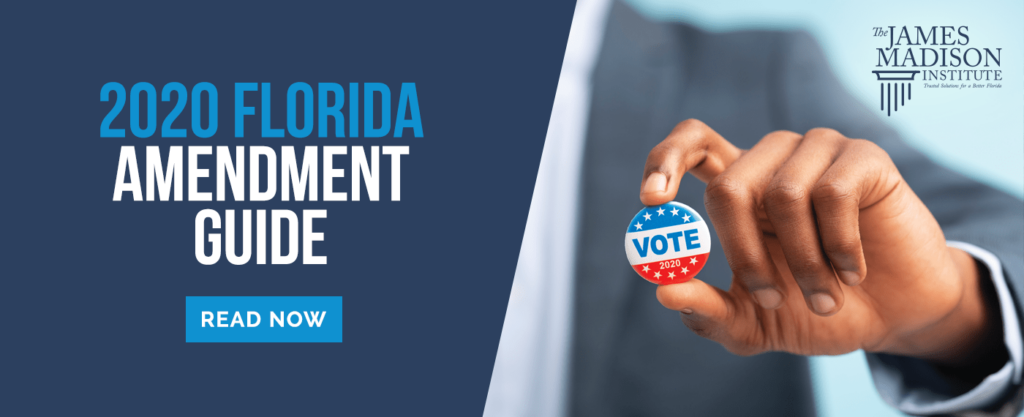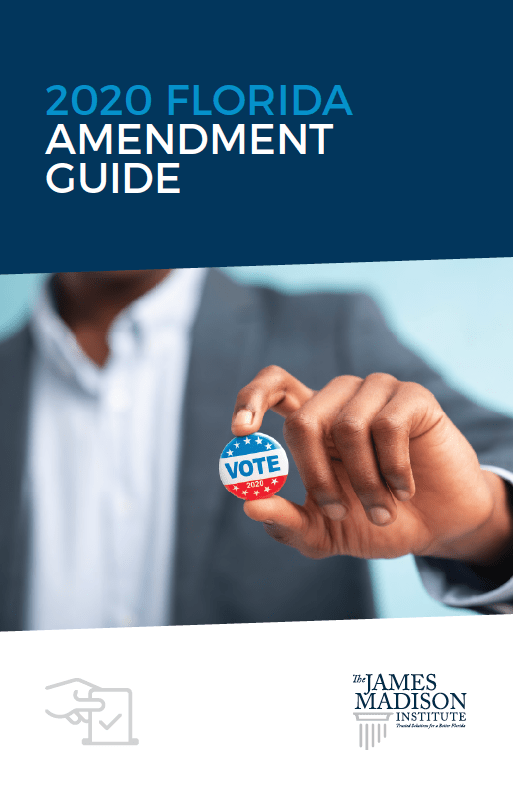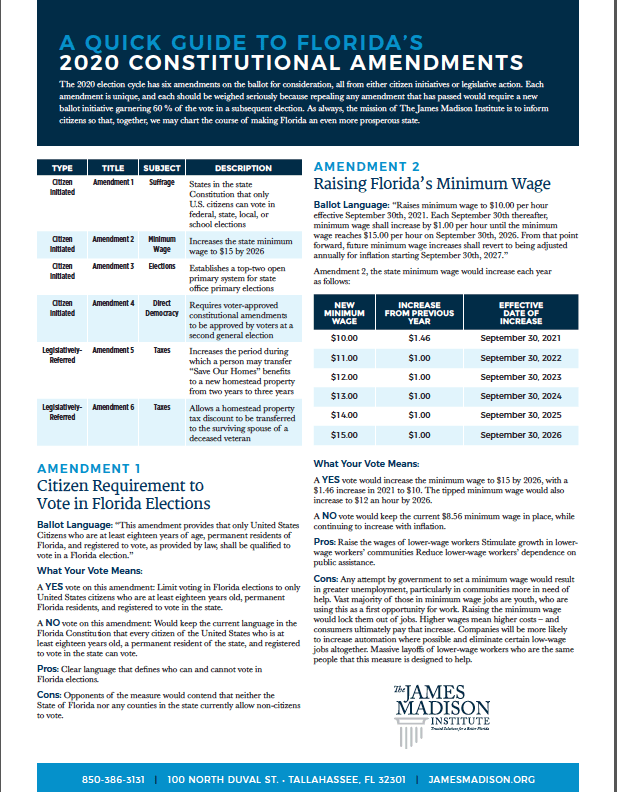Florida’s history with state constitutions is storied. We have had six different constitutions over our 175 years. Our most recent constitution was ratified just 52 years ago, and we possess more ways to amend the constitution than any other state.
In most election years, ballot initiatives are fairly clear and straightforward. The 2018 election cycle was a notable exception, as Florida’s Constitution Revision Commission placed more than a dozen initiatives on the ballot, most of which were multiple subject amendments. For the 2020 election cycle, there are just six amendments on the ballot for consideration, all from either citizen initiatives or legislative action. Per requirements, every ballot initiative proposed is a single-subject proposal.
It is our pleasure to provide this 2020 Amendment Guide. We hope it is of value to Floridians as they begin to unpack the six constitutional amendments that will be presented to them on November 3. Each amendment is unique and each should be weighed seriously because repealing any amendment that has passed would require a new ballot initiative garnering 60 percent of the vote in a subsequent election.
As always, the mission of The James Madison Institute is to inform citizens so that, together, we may chart the course of making Florida an even more prosperous state. It is in that context that we offer this analysis.
Introduction:
On November 3, 2020, Floridians will march to the ballot box to cast their votes. In addition to electing a President, 27 members of Congress, 120 members of the State House and 20 members of the Florida Senate, the ballot tasks Floridians with passing judgment on six proposed constitutional amendments. Constitutional initiatives play a pivotal role in the governance of the State, and thus warrant a heightened level of scrutiny.
Proposed constitutional amendments on the November ballot originate from two specific sources: the Florida Legislature and the citizens of Florida. Regardless of how a measure makes it to the ballot, all amendments require a 60 percent voting majority to pass. Additionally, each source establishes different hurdles before an amendment can reach the ballot. In the legislature, 60 percent of the Florida House of Representatives and Florida Senate each must agree to put the proposed amendment on the ballot. This year, the Florida Legislature passed two Amendments (5 and 6) to the ballot.
The Florida Constitution also has a mechanism for a citizen initiative petition. Floridians can place proposed amendments on the ballot by gaining at least 766,200 signatures from 14 of the State’s 27 congressional districts (the requirement is eight percent of the total number of votes cast in the last presidential election). Four measures made it to the ballot in this method: Amendments 1 through 4.
As voters and engaged citizens of Florida, it is our civic duty to responsibly educate ourselves on important changes to the Florida Constitution. On the pages that follow, readers can find an analysis of each ballot initiative.
Click here to read the full 2020 Amendment Guide
Click here to read the 2020 Amendment Guide in Spanish
Click here to read a quick one pager of the 2020 Amendment Guide
Interested in ordering copies of the 2020 Amendment Guide in either English and/or Spanish?
[wpforms id=”6688″ description=”true”]















